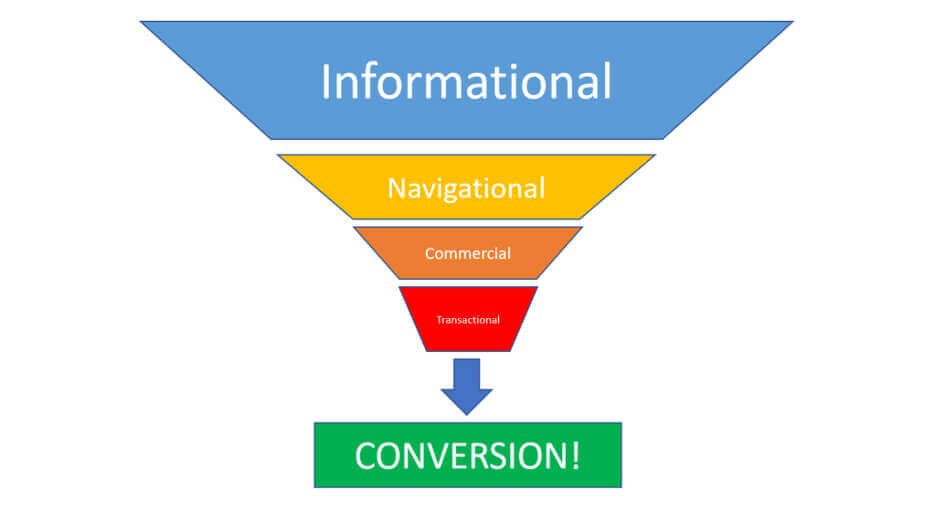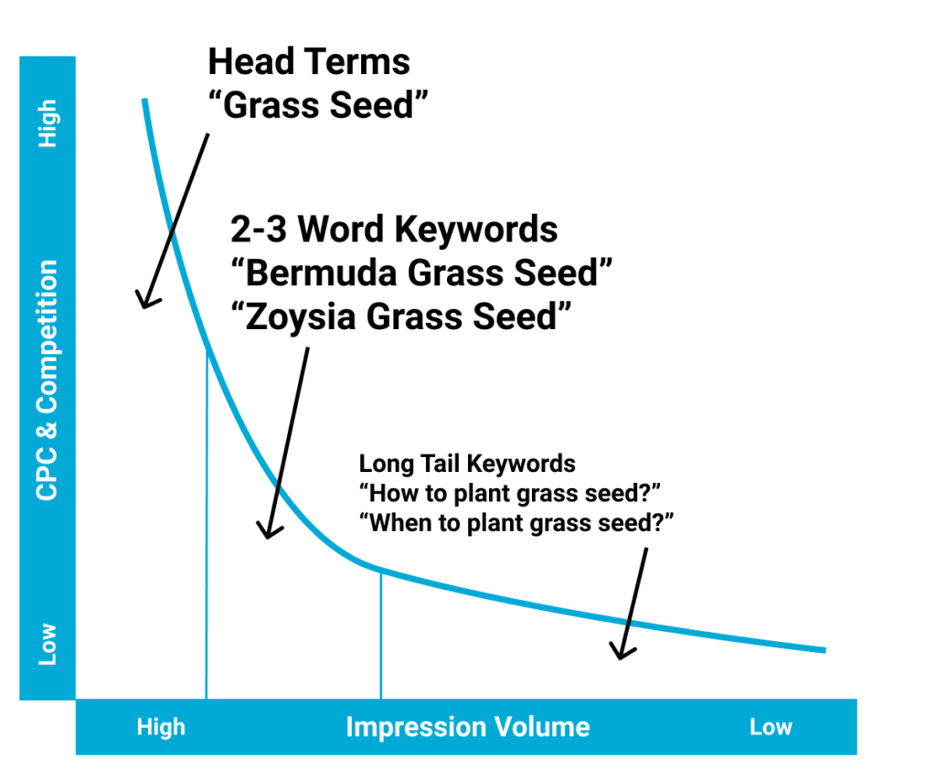When conducting keyword research, it may be easy to get into a mindless groove and forget to consider all of the various keyword metrics and types of search results associated with each keyword.
To understand keyword metrics, you first need to have an understanding of the various types of queries.
For our national and e-commerce campaigns, there are four primary query types that we focus on at Searchbloom.
Informational
Often referred to as “long tail,” informational queries provide unique answers to a question or statement that is being searched. For example, “Wireless earbuds with the best battery life.” While not exactly a question, it’s clear that they are looking for information on wireless earbuds that offer a long battery life. These queries generally have a lower search volume and aren’t as competitive, so ranking for them is a quicker and easier process.
Navigational
A navigational query is when there is the intent of finding a particular website. For example, if someone searches for “Jaybird,” it’s safe to assume that they are trying to find JaybirdSport.com.
Commercial
Commercial queries are generally more competitive and have a higher search volume. Commercial queries are often made up of an exact brand and product name, like “Apple AirPods Pro,” or maybe something as simple as “Airpods.”
Transactional
Transactional queries suggest an intent to complete a purchase. These search terms may include phrases like “purchase,” “buy,” or “for sale.” For example, “Buy Apple Airpods”, or “Apple Airpods for sale”.
Query Types in the Buying Process
By using these different types of keywords as part of your research, you can organize keywords by search intent.
If you aren’t sure what the intent is behind a particular keyword, you can quickly figure that out by conducting a search for that keyword in Google. If the results don’t match the type of page you are targeting, you may want to make that keyword less of a priority or adjust your strategy a bit.
When organizing your keywords by search intent, you will improve your chances of being found in the search engines through every step of the buying process.

Let’s go back to the wireless headphone example. If I’m in the market for a new set of earbuds but aren’t sure which ones I want to buy, I’m going to do some research. I want to find out which ones have the longest battery life, offer the best sound quality, or which ones are in my price range.
If I were an online retailer that sold various products, including headphones, my goal would be to rank for terms during each step of the buying process. The way I could do this is by creating content based on each query type. buy backlinks
This could be done by creating a separate comparative page that shows the differences between various earbuds. Then, to target some commercial and transactional queries, I could create a product page that lists out all of the tech specs for each model of earbuds that includes an option to purchase.
Because long-tail phrases have a lower search volume, you may not be as enthusiastic about targeting some of these terms. But, these keywords are generally easier to rank for and are an excellent opportunity to introduce your brand to the searchers who are in the initial steps of the buying process.

When in the “research phase,” users may search a head-term, or commercial term, at first. They’ll quickly realize that returned results aren’t exactly what they are looking for. They don’t want to go to each product page and compare each item one-by-one. Instead, they will refine their search query to find exactly what they are looking for.
By taking the time to understand the search intent behind each keyword you are targeting, you can avoid a lot of stress, headaches, and banging your head against the wall trying to figure out why you aren’t getting more traffic to your site. Take your time when conducting keyword research and methodically review each term you want to rank for. You’ll sleep better at night by doing so.


